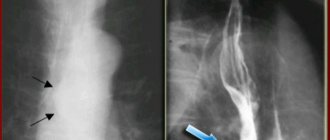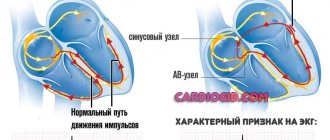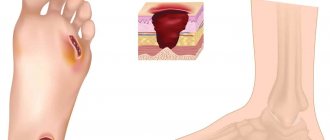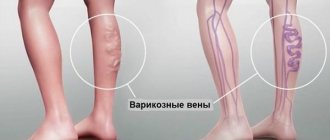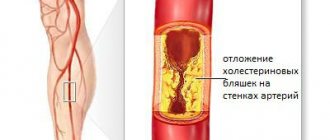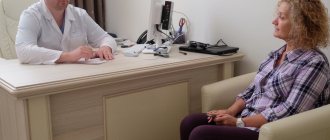Reticular varicose veins are a type of varicose veins, which is characterized by dilation of thin intradermal veins. In most cases, this disease affects women. Despite the fact that it is considered safe, the pathology has a pronounced cosmetic defect, and women strive to get rid of it as quickly as possible.
If you look at a photo of reticular varicose veins, you can see that the affected area on the leg is covered with a “mesh” of thin blue or purple venous vessels. That is why it is often called “cosmetic” varicose veins.
At CELT you can get advice from a phlebologist.
- Initial consultation – 3,000
- Repeated consultation – 2,000
Make an appointment
Causes of reticular varicose veins
Reticular varicose veins occur due to various reasons. One of them is taking hormonal medications, including during pregnancy. As hormones affect the small saphenous veins, they dilate and become noticeable. In addition, the causes of reticular varicose veins include prolonged static loads and excess weight. Most often, reticular varicose veins develop in patients with a genetic predisposition. It is not the pathology itself that is passed on to them from their parents, but the special structure of the blood vessels, which predisposes them to varicose veins. In pregnant women, this type of pathology occurs due to changes in hormonal levels and heavy loads on the lower extremities. As for other factors that stimulate the development of the disease, these include:
- long-term use of hormonal drugs;
- smoking;
- unbalanced diet;
- changes in hormonal levels in women;
- excess weight;
- the presence of venous-arterial fistulas;
- liver diseases;
- intense loads on the legs during sports training;
- work that requires frequent and prolonged standing.
Diagnosis of varicose veins in children
All of the above suggests that it is necessary to detect varicose transformation of saphenous vein valves in childhood. Ultrasound duplex scanning of veins allows you to determine the prevaricose condition and begin treatment in a timely manner.
Phlebologists with extensive experience know well that the earlier the disease begins to manifest itself, the faster it will develop. Diagnosis of varicose veins in children in the first stages of its development allows not only to provide recommendations for its general prevention, but also to carry out procedures that stop the progression of the disease.
Clinical manifestations of reticular varicose veins
As a rule, the disease practically does not manifest itself, being a cosmetic defect. It appears in the form of a “mesh” of blue or purple venous vessels, which is clearly visible under the skin on the lateral surface of the thighs. The size of the lesion varies: from single vessels to very large formations raised above the skin. In addition, defects such as dilation of small veins in the legs may be clearly visible. Other symptoms are as follows:
- feeling of heaviness in the legs;
- swelling of the legs and feet;
- pain in the lower leg;
- the appearance of hemorrhages under the skin and external venous bleeding (in severe cases);
- cramps at night;
- local itching.
How long does it take for signs of pregnancy to appear?
The initial signs of pregnancy appear in the second or third week after the end of menstruation, that is, about a week before the calendar start of the next menstruation.
Mucus discharge during pregnancy
Before the onset of menstruation, most women experience thick and scanty discharge called “leucorrhoea.”
After fertilization, due to the high level of progesterone, the work of the cervical glands, which produces mucus, is activated. Therefore, from the first days of conception, mucous discharge becomes more abundant, transparent and has a liquid consistency. It is this secret that protects the pregnant woman and the fetus directly from pathogenic microorganisms.
Thrush during pregnancy
The secretion secreted by the uterus is rich in hydrogen ions, so yeast easily multiplies in it, causing thrush, accompanied by white curdled discharge, itching and burning in the vaginal area.
Candidiasis during pregnancy can also develop against the background of a disturbance in the vaginal microflora.
To avoid intrauterine infection of the fetus, if signs of thrush appear, you should immediately consult a doctor.
Frequent urination during pregnancy
Often, increased frequency of urination is observed in late pregnancy, which is caused by the growth of the fetus in the womb and its pressure on the bladder and ureter.
But even in the first weeks of bearing a child, the urge to urinate may become more frequent, both during the day and at night, which is associated with increased blood circulation in the pelvic organs.
The expectant mother feels as if her bladder is full, and a small amount of urine is released during urination.
If frequent urination does not cause any discomfort, there is no need to worry about it.
Cystitis during pregnancy
Increased urination during pregnancy, accompanied by pain in the groin, burning in the ureter and increased temperature, may be a symptom of cystitis - a disease that often develops in the early stages of pregnancy due to a sharp decrease in immunity, increased susceptibility to bacteria and exacerbation of inflammatory processes.
Temperature 37 as a sign of pregnancy
An increase in body temperature to subfebrile levels (37.2 - 37.4 ° C) in the early stages of pregnancy in the absence of symptoms of viral diseases is normal in 8 cases out of 10. And it is explained by the increased production of progesterone, which affects the thermoregulation center, as well as physiological immunosuppression, which protects the body of a pregnant woman from rejection of the fetus.
A rise in temperature to 37.5°C should be a reason to visit a doctor.
Increase in basal temperature during pregnancy
This sign of pregnancy is informative only in the first 2 weeks after conception, after which the basal body temperature stabilizes.
Pregnancy is indicated by an increase in basal temperature for several days in a row to 37.0 - 37.2 ° C.
It is important to measure basal temperature correctly: the thermometer is inserted into the rectum immediately after waking up in the morning, without getting out of bed. It is recommended to carry out this procedure every day at the same time for several days.
Bloating (flatulence) during pregnancy
Starting from the early stages of pregnancy, intestinal motility is disrupted, which leads to increased gas formation and bloating.
Thus, already in the first weeks of conception, pregnant women may experience a feeling of excessive fullness in the abdomen, accompanied by a tingling sensation radiating to the uterus.
Constipation and diarrhea during pregnancy
Sex hormones produced during pregnancy inhibit the functioning of the intestines, causing it to relax, which causes constipation or, on the contrary, diarrhea. At the same time, constipation most often torments pregnant women in the later stages of pregnancy, while diarrhea is more typical in the first month of pregnancy.
Hemorrhoids during pregnancy
Frequent constipation and blood flow to the pelvic organs can provoke the formation of hemorrhoids, which mainly form in late pregnancy.
However, if before pregnancy a woman suffered from hemorrhoids, then this pathological condition often worsens in the first few weeks after conception.
Leg cramps during pregnancy
Cramps and pain in the legs often bother pregnant women at night. Cramps are manifested by involuntary sharp and painful contraction of the calf muscles.
To eliminate cramps, follow these recommendations:
- Stand on your flattened leg. If acute pain prevents you from moving your leg, you must, overcoming the pain, pull your foot towards you.
- Rub the cramped muscle using pinching and patting.
- Make a hot foot bath with salt.
Our doctors
Drozdov Sergey Alexandrovich
Cardiovascular surgeon, phlebologist, Doctor of Medical Sciences
47 years of experience
Make an appointment
Malakhov Yuri Stanislavovich
Doctor - cardiovascular surgeon, phlebologist, Honored Doctor of the Russian Federation, Doctor of Medical Sciences, doctor of the highest category
Experience 36 years
Make an appointment
Treatment with medications
Treatment of reticular varicose veins of the lower extremities does not allow one to fully cope with the disease and is aimed at eliminating the clinical manifestations of the disease. It is carried out using medications, which also eliminate the risk of complications:
- Detralex tablets - eliminate pain and a feeling of heaviness in the legs;
- Antistax capsules - eliminate venous circulation disorders;
- Venoruton capsules - eliminate the risk of formation of retinal microthrombi, minimize the clinical manifestations of the disease;
- Phlebodia tablets - minimize symptoms;
- ointment "Troxevasin" - minimizes clinical manifestations, used only as prescribed by a doctor if indicated.
Therapeutic treatment
Vein sclerotherapy
- Cost: 6,500 rub.
- Duration: 20-60 minutes
- Hospitalization: No hospitalization required
More details
The selection of therapeutic treatment methods is carried out individually, taking into account the results of diagnostic studies. The most effective are:
- Laser sclerotherapy is a painless procedure that allows you to successfully combat the disease in the initial and middle stages of development. Requires three procedures with an interval of one month;
- Foam sclerotherapy involves the introduction of sclerosing substances into the vessels that block it. It is carried out in the presence of medium and large veins, lasts from five minutes to one hour depending on the size of the lesion;
- Microphlebectomy provides a good cosmetic effect and allows you to return to your normal lifestyle immediately after the procedure. It involves puncturing a vein with a special hook, pulling it out and ligating it.
All of the above treatment methods require wearing stockings with a compression effect during the rehabilitation period. This approach allows you to minimize the load on the veins of the legs, stimulates venous outflow and eliminates blood stagnation. It is important that the patient wears compression stockings exactly as scheduled, as this will affect the results of treatment.
Modern treatment of varicose veins in children
Modern technologies for the treatment of varicose veins are highly effective and safe, which allows them to be successfully used to treat patients under 18 years of age.
It is very important to start minimally invasive treatment in a timely manner, since it will stop the development of the disease and prevent the formation of large varicose nodes and pampiniform venous plexuses, as well as varicose dermatitis and trophic ulcers.
Some time ago, early treatment of varicose veins was difficult due to the traumatic nature of the operation and a number of side effects such as the appearance of rough scars and paresthesia. All these negative consequences outweighed the positive effect of removing incompetent veins. Due to the lack of ultrasound equipment that allowed for a full preoperative examination, diagnostic errors often occurred. An important factor that led to the delay of radical treatment was the need for hospitalization along with a long recovery period.
Today, there are a number of minimally invasive technologies that allow treatment on an outpatient basis without resorting to surgery. The availability of modern ultrasound equipment makes it possible to identify the source of subcutaneous vein overflow at an early age. When using endovascular treatment technologies, increased formation of new vessels is excluded. This approach allows us to minimize the possibility of relapse not only in the near future, but also in the long term.
The specialists of the CELT clinic will help you restore beauty and health to your legs and leave the disease at an early stage!
Prevention
Prevention of reticular varicose veins is as follows:
- maintaining an active healthy lifestyle;
- daily leg exercises;
- swimming.
For those at risk, the following should be added to the above:
- wearing compression stockings;
- avoidance of intense physical activity on the legs;
- balanced diet.
Our services in phlebology
The administration of CELT JSC regularly updates the price list posted on the clinic’s website. However, in order to avoid possible misunderstandings, we ask you to clarify the cost of services by phone: +7
| Service name | Price in rubles |
| Appointment with a surgical doctor (primary, for complex programs) | 3 000 |
| Appointment with a cardiovascular surgeon (phlebologist), MD. Malakhova Yu.S. with ultrasound examination (primary) | 4 500 |
| Duplex scanning of the veins of both lower extremities | 6 000 |
| Duplex scanning of the veins of one lower limb | 3 500 |
All services
Make an appointment through the application or by calling +7 +7 We work every day:
- Monday—Friday: 8.00—20.00
- Saturday: 8.00–18.00
- Sunday is a day off
The nearest metro and MCC stations to the clinic:
- Highway of Enthusiasts or Perovo
- Partisan
- Enthusiast Highway
Driving directions
Signs of the first and second pregnancy
Are the early signs of the first and second pregnancy different? We answer: everything is purely individual. There are many cases where the same woman’s first pregnancy occurred against the background of severe toxicosis, while bearing a second child did not cause any problems.
In general, gynecologists identify the same early signs of pregnancy, regardless of whether it is the first, second or third. However, pathologies such as hemorrhoids and varicose veins during the second and subsequent pregnancies become aggravated already in the first weeks of gestation.
